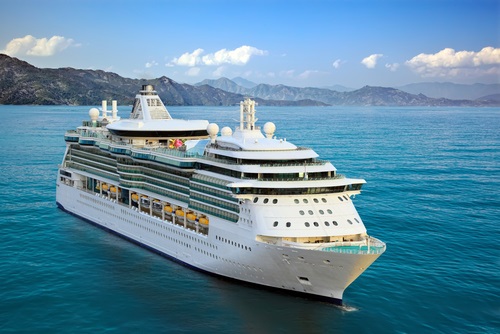
“Whenever we think of moving things around, we think of Joyce.”
Todd Nottingham, Nottingham, Peratrovich and Drage Engineers
“We chose these screw jacks because safety was the most important element.”
Andre Studenny, Hamilton Engineering
“Working with Joyce was the easiest part of the project.”
Tony Holt, Jesse Engineering
Port of Seattle
Jesse Engineering Co. in Tacoma, Washington was hired as the primary contractor to design and build a Passenger Boarding Gangway system that would facilitate the loading and unloading of cruise ships at the Port of Seattle. They worked with Peratrovich, Nottingham & Drage Inc. for the structural design; Hamilton Engineering Inc. for the mechanical design; and Technical Systems, Inc. for the controls design and implementation.
Why Joyce Screw Jacks:
- Safety – An investigation into hydraulic lift systems and cable operated control systems revealed that in the event of a system failure the platform would probably fall and people could be injured. The Joyce screw jacks provided significant redundancy to the system. By using a self-locking acme thread that will not backdrive, the screw jacks ensured that the platform would not fall.
- Cost – The screw jacks were a significant cost-saving feature in the overall bid for the project. Although the unit has a large hydraulic unit for driving it north and south on the dock, the increase in size of the hydraulic power unit for the added lifting functions coupled with the cost of the hydraulic controls, cylinders and complexity made the Joyce screw jacks standout as the best option.
- Durability – Jesse Engineering has to provide maintenance for one year following installation. The Joyce screw jacks require only simple and ordinary maintenance that is easy to perform.
- Overall Performance – The Joyce screw jacks perform better synchronization in this application. They also operate with no noise and no noticeable vibration. These two features are vital to this application because people are walking on the platform as it adjusts.
Since 1873, the Joyce/Dayton Corp., with headquarters based in Dayton, Ohio, has been one of the premier manufacturers of rugged, heavy-duty mechanical and hydraulic lifting and positioning equipment. From leveling log homes and ship dry-dock transfers to stage and ergonomic lifts, Joyce/Dayton has handled the toughest applications imaginable. With unmatched engineering and technical expertise, Joyce can provide custom solutions in a time- and price-sensitive manner turning ideas into working solutions. For more information, contact Joyce/Dayton.
Unique Features:
- Because of a wide range of tide heights (16 feet difference between high and low tides) the gangway system needed to self-adjust the shipside platform to the height of the ship’s door.
- The system had to meet slope standards set by the Americans with Disabilities Act.
- The gangway – which is 26 feet wide, 110 feet long, 45 feet tall and weighs 190,000 pounds – had to be portable to allow for movement back and forth on the dock and to accommodate winter storage.
- All of the materials had to be able to withstand a harsh marine environment, as well as exposure to weather variables of high winds and heavy snow loads.
- The project had a tight deadline for completion.
How the System Works:
- There are two moveable platforms of the gangway that traverse up and down by means of the Joyce screw jacks to keep the platform at the height of the ship’s door.
- Computer controls with ultrasonic sensors gauge the motion and location of the ship relative to the gangway and automatically adjust the height of the gangway. When an adjustment is needed, the sensors signal a vector motor to turn a series of shafts that are attached to the Joyce screw jacks on the respective platform.
- There are four screw jacks on each of the platforms. Each platform has additional controls that will send a signal to stop operations if just one of the jacks fails to work.
